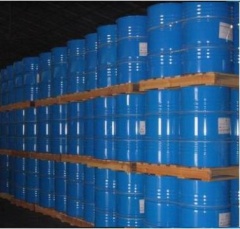Heptane
| Infobox on Heptane | |
|---|---|
| Example of Heptane |  |
| Facts | |
| Origin | - |
| Stowage factor (in m3/t) | - |
| Humidity / moisture | - |
| Ventilation | - |
| Risk factors | See text |
Heptane
Description / Application
n-Heptane is the straight-chain alkane with the chemical formula H3C(CH2)5CH3 or C7H16. When used as a test fuel component in anti-knock test engines, a 100% heptane fuel is the zero point of the octane rating scale (the 100 point is a 100% iso-octane*). Octane number equates to the anti-knock qualities of a comparison mixture of heptane and isooctane which is expressed as the percentage of isooctane in heptane and is listed on pumps for gasoline dispensed in the United States and internationally.
Heptane (and its many isomers) is widely applied in laboratories as a totally non-polar solvent. As a liquid, it is ideal for transport and storage. In the grease spot test, heptane is used to dissolve the oil spot to show the previous presence of organic compounds on a stained paper. This is done by shaking the stained paper in a heptane solution for about half a minute.
Extraction into heptane is a means by which aqueous bromine may be distinguished from aqueous iodine. In water, both bromine and iodine appear brown. However, iodine turns purple when dissolved in heptane, whereas the bromine solution remains brown.
Heptane is commercially available as mixed isomers for use in paints and coatings, as the rubber cement solvent "Bestine", the outdoor stove fuel "Powerfuel" by Primus, as pure n-Heptane for research and development and pharmaceutical manufacturing and as a minor component of gasoline.
Octane number: a number indicating the anti-knock properties of an automotive fuel mixture under standard test conditions. Pure normal heptane (a very high-knocking fuel) is arbitrarily assigned an octane number of zero, while 2,2,4-trimethylpentane or isooctane (a branched-chain paraffin) is assigned 100. Thus, a rating of 80 for a given fuel indicates that its degree of knocking in a standard test engine is that of a mixture of 80 parts isooctane and 20 parts n-heptane. Octane ratings as high as 115 have been obtained by addition of tetraethyllead to isooctane. Premium leaded gasolines have a Research octane rating of about 100, but this value drops to 85-90 for unleaded gasolines, though it may be improved by addition of methyl-tert-butyl ether. The octane rating scale ends at 125 and any higher figure is meaningless. Research octane numbers are those obtained under test or ‘laboratory’ conditions; they generally run about ten points higher than the so-called motor octane numbers, which represent actual road operating conditions.
Octane rating scale
n-Heptane is the zero point of the octane rating scale. It is undesirable in petrol, because it burns explosively, causing engine knocking, as opposed to branched-chain octane isomers, which burn more slowly and give better performance. It was chosen as the zero point of the scale because of the availability of very high purity n-heptane, unmixed with other isomers of heptane or other alkanes, distilled from the resin of Jeffrey Pine and from the fruit of Pittosporum resiniferum. Other sources of heptane and octane, produced from crude oil, contain a mixture of different isomers with greatly differing ratings and do not give as precise a zero point. ChevronPhillips Specialty Chemical produces a specialized grade of high purity n-Heptane (>99.0%) from crude oil through precision refining and distillation that is used in the measurement of octane rating for fuels.
Shipment / Storage
Heptane is available in drums.
Risk factors
Toxic by inhalation. Flammable, dangerous fire risk. TLV: 400 ppm in air.
For overseas carriage aspects of Chemicals, the readers are recommended to acquire or have access to a good chemical dictionary, and a copy of the International Maritime Dangerous Goods (IMDG) Code, issued by the International Maritime Organisation. Also consult the applicable MSDS sheet.
See also: http://www.chemicalland21.com/petrochemical/ALIPHATIC%20SOLVENTS.htm











